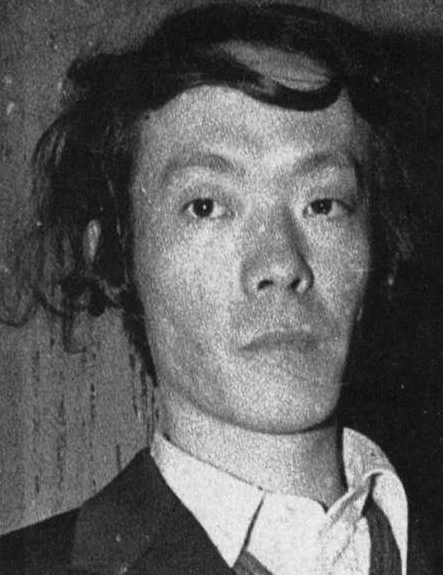Issei Sagawa
Issei Sagawa’s Wikipedia entry lists his occupation as a “public speaker, commentator, actor, [and] writer.” But for the better part of the last two decades, this 60-something Japanese man has found a hard time finding work in any of these disciplines.
That’s probably because he should be in prison. And that may be charitable.
In 1977, Sagawa (above) went to Paris to study comparative literature at the Sorbonne. The PhD student spent over three mostly uneventful years at the academy. On June 11, 1981, Sagawa asked his fellow student, a young woman named Renee Hartevelt, to come over for dinner and to translate a German work for him. She agreed, but the invitation was a pretext. Sagawa, who at under five feet (1.52m) tall considered himself a “weak, ugly, and inadequate little man” (in his own words) sat Hartevelt down at his desk and and shot her in the back of the neck with a rifle. After sexually violating her now-dead corpse, Sagawa proceeded to do what he originally set forth to do — in his words, “absorb her energy.” He took out a butcher knife and started to dine on her buttocks.
Authorities discovered Sagawa’s crime when he tried to dispose of part Hartevelt’s body in a lake but failed to do so undetected. A subsequent search of his home uncovered uneaten parts of Hartevelt’s remains in his freezer. He was kept in a French prison for two years while his case was being adjudicated. He never made it to a verdict — a judge ruled him to be insane, and ordered that Sagawa be placed in an institution.
Japanese authorities demanded his extradition. Eventually France agreed, and Sagawa was sent back to Japan. The Japanese psychiatrists who examined him ruled him sane, and he was to be brought up on murder charges. But all the evidence was in the custody of French authorities, who refused to release it to Japan. Sagawa, now officially sane and not convicted of any crimes, was free to go.
Sagawa used his newfound freedom to become an expert on the worst parts of humanity. In 1989, Japanese authorities captured a serial killer named Tsutomu Miyazaki. As Sagawa told Vice, in the same interview in which he admitted to still having cannibalistic urges, the horrors displayed by Miyazaki were beyond explanation to most. So the media asked one person whom they knew would be familiar with the mind of a deranged murdered (and then some) — Sagawa. Sagawa later would pen nearly two dozen books, many discussing what goes on in the mind of such a person.
Sagawa’s fame has, thankfully, reverted to infamy. Since 1997, he has found it difficult if not impossible to find work, and is rarely, if ever, called upon for his “expert” commentary.
Bonus fact: Mount Mihara is an active volcano on the small Japanese island of Oshima. On February 12, 1933, a Japanese student named Kiyoko Matsumoto jumped into the lava, likely dying instantly — and, for some reason, starting a trend. A total of 905 people jumped into Mount Mihara that year. No one knows why so many others followed her lead, and the Japanese government has fenced off the volcano.
From the Archives: Eggplant, Rice, Bananas and Dog Food: A more funny than horrible story about a minor Japanese celebrity.
Related: A volcano making kit, because linking to anything related to today’s main story would be a horrible thing to do.

